Language Skills for Academic Success [Tier 3 Toolkit - January 2024]
When supporting students with literacy, do you consider you are building a LEGO tower of bricks with each representing mastery of a prerequisite skill or more as a jigsaw puzzle where the pieces are interconnected with opportunities to review and revisit skills building mastery over time?
I typically will do both, tailoring to the needs of the students I’m working with or the needs of the class I’m teaching.
I will typically use a skill mastery approach when focused on reading [decoding] and spelling skills – that is the ‘alphabetics’ cluster of skills identified in the National Reading Panel [2000] report. However, once students can read text with sufficient fluency, I’ll incorporate the reading comprehension strategies of question asking and question answering, to generate written summaries utilizing sentence combining to support student success.
When providing intervention support to students requiring Tier 3 Support, there is great value in understanding the relationship between language and executive skills and the strategies that can be incorporated to scaffold success.
Want to know more? Join me in January as we dive into Academic Language for Student Success as part of the Tier 3 Toolkit Membership. I’ll be sharing Key knowledge and research plus Practical resources and how they could be used.
You have the option to join anytime for 3, 6 or 12 months and cancel anytime. There is on demand access to all content and Q & A support from 2023 to use as a library when you need it and as always you get access to live Q & A support each month at lunchtime or evening with recording access and a chat community where you can ask whatever you need to know when you need the help.
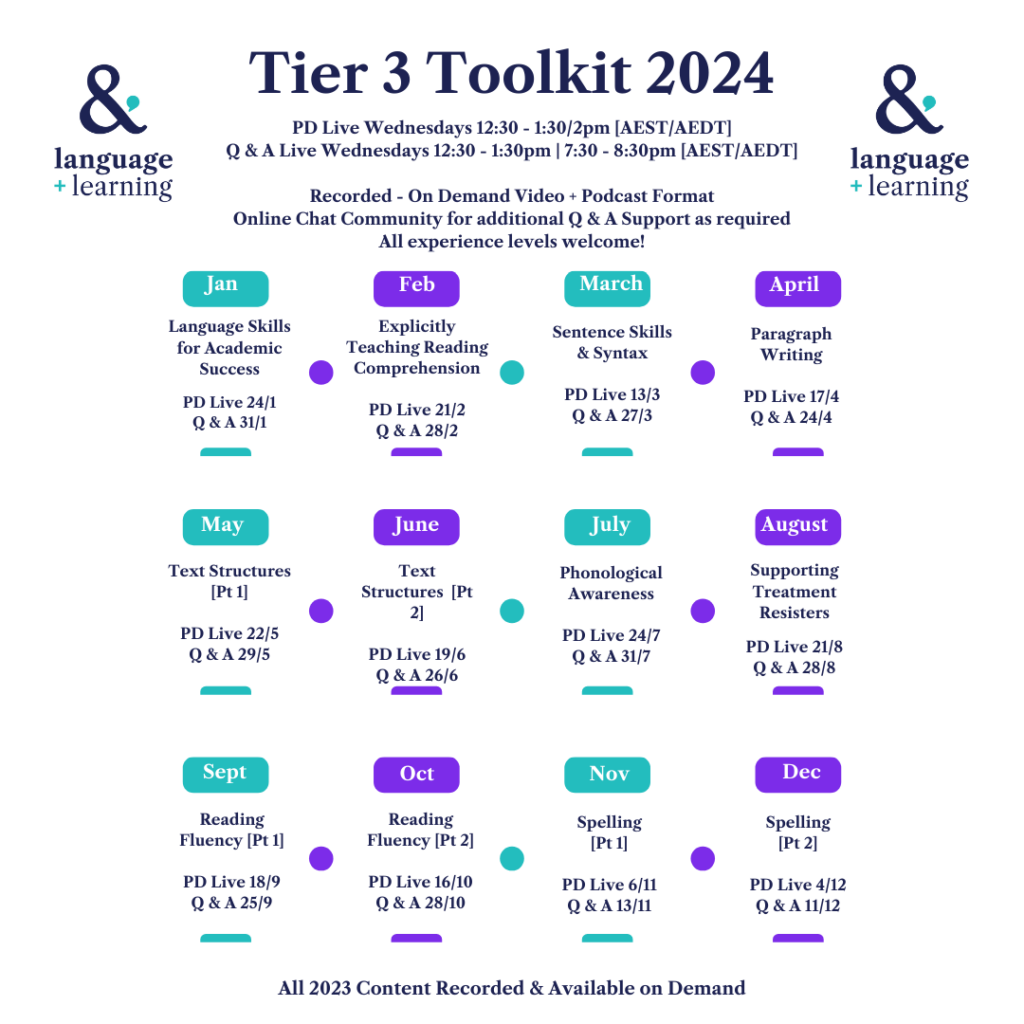
The need to assess phonological processing when working with low progress readers
& Childhood Apraxia of Speech
When working with low progress readers, there are some who fail to respond to standard systematic phonics based intervention. Upon closer reading of the research, these students typically have weakness in both components of Phonological processing, the innate skills we are born with [as measured by Rapid Automatic Naming] as well as Phonological Awareness skills [which include both Phonological Awareness and Phonemic Awareness skills]. This combination of difficulties is consistent with the Double Deficit Hypothesis proposed by Maryanne Wolfe. Current intervention programs for this student population include RAVE-O [developed by Maryanne Wolfe] and Read3 [developed by Robyn Monaghan & Kate Andrews]
In my clinical experience, the students most at risk of presenting with a double deficit profile are those with a co-occurring diagnosis that may impact neurological functioning. Students I have worked with will typically have difficulties with RAN and PA skills alongside histories of epilepsy [Non-Rolandic Seizures], Traumatic Brain Injury, Severe Speech Sound Disorder, Childhood Apraxia of Speech, Rare Disease involving white matter damage in the cerebellum, Extreme Prematurity, significant family history of Dyslexia. Where these students presentment with co-occurring language impairment or DLD, intervention must be even more tailored towards individual student profiles of strength and weaknesses.
A recently published paper explores the Long-term Outcomes for students with CAS – including literacy outcomes. Key extracts from the paper are quoted below:
- Lewis, B.A., Miller, G.J., Iyengar, S.K Stein, C. & Benchek, P. (2023)., Long-Term Outcomes for Individuals With Childhood Apraxia of Speech Journal of Speech, Language, and Hearing Research • 1–17 https://doi.org/10.1044/2023_JSLHR-22-00647
‘The diagnostic criteria of childhood apraxia of speech (CAS) as a disorder of speech and motor planning and motor programming have been well studied since the American Speech-Language-Hearing Association (ASHA) published a report in 2007. ASHA defined CAS as “a neurological childhood (pediatric) speech sound disorder in which the precision and consistency of movement underly-ing speech are impaired in the absence of neuromuscular deficits (e.g., abnormal reflexes, abnormal tone)” (ASHA, 2007, pp. 3–4). Three core speech characteristics of CAS were used to define this disorder: error inconsistency, lengthened and disrupted co-articulation, and inappropriate prosody.’
There have been previous findings in the research regarding students with CAS and their literacy outcomes as detailed below:
‘The participants with CAS in the Snowling and Stackhouse (1983) and Stackhouse and Snowling (1992b) studies demonstrated persistent speech errors and comorbid literacy difficulties. The authors concluded that CAS arises from a complex interaction of phonological representations, lexical representations, and motor planning difficulties that also affect reading and spelling acquisition.’
‘Participants with CAS with impoverished linguistic abilities (i.e., oral language and phonological awareness) demonstrated below-average decoding skills, similar to below-average readers with other idiopathic SSD. In addition to oral language and phonological awareness, motor speech sequencing abilities, such as multisyllabic word repetition (MSW) and diadochokinetic rate, further differentiated average and below-average readers with CAS.’
‘Turner et al. (2019) examined speech, language, and literacy outcomes in a 15-year-old male diagnosed with CAS. By 15 years, he had acquired intelligible speech with average-range oral language skills; however, deficits in reading comprehension, decoding of nonsense words, and spelling persisted.’
‘One of the goals of this study was to examine the associations of persistent speech sound errors with word-level decoding, phonological processing skills, multisyllabic word repetition, and motor speech sequencing.’
‘However, regardless of persistence of speech errors, individuals with a history of CAS demonstrate an elevated risk of literacy difficulties. In this study, the persistent group did not differ significantly from the nonpersistent group on measures of single-word decoding or phonological awareness skills, often associated with literacy. Both groups were at similar risk for below-average decoding and phonological awareness. Many individuals with CAS present with phonological processing difficulties that may impact spoken language as well as literacy (Lewis et al., 2004; Miller et al., 2019; Miller & Lewis, 2022).’
‘Nathan et al. (2004) proposed that poorly specified phonological representations may underlie both speech errors and phonemic awareness. Other researchers proposed that the underlying phonological processing deficits may contribute to CAS itself (Marion et al., 1993; Marquardt et al., 2002; Stackhouse & Snowling, 1992a, 1992b).’
‘A larger second study of individuals with CAS (N = 40) enrolled in the CFSRS specifically examined reading outcomes compared to participants with other SSD (N = 119; Miller et al., 2019). Sixty-five percent of the participants with CAS, compared to 24% of those with other forms of SSD, were classified as low-proficiency readers based on single-word decoding of real and nonwords. Low proficiency readers in the CAS and SSD groups did not differ on measures of reading, language, or phonological awareness. Language and phonological awareness skills were the strongest predictors of reading skills.’
‘These findings suggest that although CAS is commonly defined as a motor speech disorder, SLPs should be aware of the comorbidity of language and literacy difficulties related to a diagnosis of CAS and design interventions accordingly (Gillon & Moriarty, 2007).’
‘Furthermore, the underlying deficit that results in reading disorder (RD) for children with CAS may differ from those with RD who have never had SSD. Miller and Lewis (2022) reported that although test scores of single-word decoding skills did not differ between these two groups, the CAS group performed significantly worse on measures of phonological processing, multisyllabic word repetition, diadochokinetic rates, and speech-in-noise per-ception. Those participants with CAS and language impairment (LI) were at the highest risk for deficits in literacy and literacy-related skills. If the causal basis for RD in children with CAS differs from children with RD and no Speech Sound Disorder, then interventions for garden variety RD may be less effective for children with CAS. More research is needed to specify the underlying deficits for reading difficulties of children with CAS and to develop interventions that address these issues.’
Research Recommendations [Lewis et al, 2023]
- Documenting early motor deficits may aid in improving prognoses and treatment for children with CAS.
- Identifying phonological processing deficits may result in earlier intervention for literacy skills.
- While speech sound production may normalize for some children with CAS, evidence from our studies suggests that literacy skills may remain impaired.
- For a child with a diagnosis of CAS, systematic preliteracy instruction could begin in preschool and literacy instruction by kindergarten (Zaretsky et al., 2010).
- It would seem unwise to remove children with an early diagnosis of CAS whose speech may normalize in the primary grades from an IEP if there is any evidence of phonological processing, language, or reading difficulties.
- These same children are at risk of being placed back on an IEP by the fourth or fifth grade because of learning issues, especially reading.
What to do next
Familiarise yourself with the research from Maryanne Wolf & team regarding Double Deficit Theory.
- Familiarise yourself with existing resources that can support students with weakness in phonological processing skills and learning to read
- Rave – O [Distributed in Australia by Silvereye Education]
- Read 3 [www.read3.com.au]
- Reading Dr Online which allows for a text to picture matching response rather than a read aloud response [www.readingdoctor.com.au]
- Consider adding assessment tools to your toolkit such as CHIPS [www.read3.com.au], CTOPP-2, WRMT-3 & RAN/RAS
- If you need additional professional support and training join my Tier 3 Toolkit Membership for Language, Learning & Literacy. You can access an online library where we explore assessment tools, intervention resources and how to take a hypothesis driven approach when supporting reading, comprehension and writing skills for students requiring individualised Tier 3 supports and intervention in the clinic and classroom.
Reference:
Lewis, B.A., Miller, G.J., Iyengar, S.K Stein, C. & Benchek, P. (2023)., Long-Term Outcomes for Individuals With Childhood Apraxia of Speech Journal of Speech, Language, and Hearing Research • 1–17 https://doi.org/10.1044/2023_JSLHR-22-00647
Speech Pathologist or Tutor - Same or Different?
I’m often asked what the difference is between supports offered by a Speech Pathologist and those offered by a Tutor. While a Speech Pathologist should have a solid understanding of the principles of effective, research aligned whole class and small group intervention, their niche space is working with students who have co-occurring conditions or known ‘risk factors’ for increasing their likelihood of academic failure. While specialist tutors might work with students who have not responded to whole class and small group instruction, their focus is typically on students with Dyslexia who often have co-occurring conditions such as ADHD, Dysgraphia, Dyscalculia, or weakness in oral language skills resulting from the impact of reading difficulties.
A Speech Pathologist is often involved when there is an impact on language skills, such as students with DLD [Developmental Language Disorder], Hearing Loss, Autism, CAS [Childhood Apraxia of Speech] or Speech Sound Disorder [SSD]. There is also a population of students who have had complex medical history who may have mild-moderate injuries impacting language, learning and literacy. This might include a student with post-concussion syndrome, traumatic brain injury, brain tumor, those who have undergone chemotherapy treatments, epilepsy, extreme prematurity, and an emerging population of students with chronic heart conditions involving heart surgery at a young age. As a result of advances in medical treatments, there are many children who now survive illnesses of early childhood and attend mainstream school with their peers.
Speech Pathologists can make a valuable contribution to the language, learning and literacy skill development of students during the primary and high school years. For some students, difficulties with language, learning and literacy can appear in high school due to the increased complexity and abstractness of language and literacy demands. To support effective generalisation of skills, there is great value in Speech Pathologists embedding intervention in the curriculum to optimise student outcomes. One common concern voiced is that the line between Speech Pathologist, Tutor, Classroom Teacher, and Teacher Aid can become blurred meaning Speech Pathologists often lack clarity about their purpose and role working with school age students.
This issue has been comprehensively addressed in a well-known article by Barbara Ehren, 2000, key components of which are shared below. In NSW, where we don’t have Speech Pathologists employed in schools, the value that their role can make has been hidden, since traditionally public health services have prioritised students in the years before school or adults. It should also be noted that skills working with language-based learning difficulties are typically developed in the Speech Pathology profession after graduation, therefore it is worth having a discussion with your therapist regarding their completion of additional training in this area.
So, to put it simply, we speak our language [for example English] and we read and write in our language [for example, English] and therefore our language is the means through which we learn information across the curriculum. Ehren [200] describes this below:
‘With regard to curriculum, language is both an end and a means to an end [Hynds, 1994]. Students must learn to listen, speak, and write in order to participate in the typical communication events that are appropriate for their respective age and grade levels. Students also use spoken and written language skills and strategies to learn in other subject areas like math, social studies, and science [Bashir, Conte & Heerde, 1998]’ Ehren, 2000.
So, we have 3 different providers all providing a level of instruction and intervention on language skills, for a range of purposes. The two tables below provide some clarity around the differing roles of Instruction, Intervention and Therapy.
Classroom Teachers | Providers of instruction in Language Arts & English. |
Special Teachers | Providers of Intervention – ESL, Literacy Tutors, Special Education Teachers |
Speech Pathologists | Providers of Therapy with in-depth expertise in language and language disorders |
Ehren, 2000
Comparison of Instruction and Therapy
| Instruction | Therapy |
Purpose | Deals with learning new information and skills in the normal course of development | Deals with remediating of compensating for deficient skills that have not fully developed of that have been lost |
Knowledge Base | Requires a basic understanding of language and language processing | Necessitates an in-depth knowledge of language, language development and language disorders. |
Learner Engagement | Has a captive audience with varying degrees of active engagement at various times | Depends on the student’s ongoing active participation in the self-help process |
Sequence | Uses a teaching sequence based on external criteria, such as curriculum standards and progression | Requires that the sequence of activities be based on individual needs and individual degree of progress. |
Individualization | Oriented towards group goals | Oriented towards individual goals [diagnostic |prescriptive | clinical approach] |
Mastery | Moves forward even when the student has not achieved mastery and sets the pace based on the average student | Requires mastery of prerequisite skills; progresses with mastery of the building blocks |
Interaction | Involves the teaching of a planned lesson | Necessitates that the clinician’s actions be contingent on the actions or reactions of the student. |
However, ‘A Speech Pathologist should not simply ignore academic subject areas. Rather they need to be grounded in curriculum content without having to be as expert as teachers. Being familiar with the curriculum is necessary for the analysis of language underpinnings. Identifying the specific language skills and strategies required of students in the general education curriculum is the first step in targeting appropriate goals for curriculum relevant therapy and assisting classroom teachers in addressing any difficulties students may encounter.’
Given their knowledge of AAC, the Speech Pathologist is also ideally placed to support students to access learning using assistive technology in partnership with the classroom teacher and school-based learning support team. Where students have an acquired injury, they can utilise their training in adult rehabilitation during their university training to determine ways to support students, such as identifying how word finding difficulties are impacting literacy skills, using text as a visual support to support comprehension or explaining how language skills for an individual student might be affecting problem solving skills in mathematics [e.g. They struggle with synonyms for basic facts terminology used in story problems]
Examples of activities that allow the maintenance of a therapeutic focus & shared responsibility for student success when providing in-classroom services. [Ehren, 2000]
Activity Recommended | Activity NOT Recommended |
Take the maths worksheet and use the problems to teach a student on the caseload to interpret language and set up the problems to be solved [ie. Identify important information or decide on an operation]
Why it is a good idea -> Assuming that the student has difficulty with language comprehension, the difficulty with the math problem solving may be related to that problem. Therapy that deals specifically with content to be processed in solving maths problems is curriculum-relevant without being redundant and also facilitates academic success. | Take the math worksheet and help a student on the caseload complete the problems.
Why it is not a good idea: Solving the problem for the student is tutoring that can be done by anyone including an aid. Completing the worksheet with the student does not address therapy goas specifically.
|
2. Teach vocabulary relevant to the curriculumto a student on the caseload by focusing on the words, metaphors, and idioms in a science textbook with which students with language disorders can be expected to have difficulty. Encourage the teacher to set up a learning station with a language master and provide language master cards for the students to review at specific times in the classroom.
Why it is a good idea: Students will have difficulty with the content of a lesson that the classroom teacher is teaching if they lack the basic vocabulary used in the explanation of content. This kind of vocabulary work is directly related to academic success. | 2. Pre-teach the science vocabulary of the next science lesson to a student on the caseload.
Why it is not a good idea: This teaching is what the science teacher should be doing. Implementing this step exonerates the teacher from responsibility to ensure that all students understand the vocabulary and concepts of a lesson or unit. |
3. Co-present a social studies lesson by guiding the students in the practice of the language strategies they have been learning in therapy. Give students cue cards to tape to their desks or use as bookmarks in their textbooks to remind them to use the strategies.
Why it is a good idea: This type of activity specifically addresses the generalization of strategies to classroom performance. |
3. Co-present a social studies lesson by taking turns teaching the lesson to all students without addressing the IEP goals of caseload students. Why it is not a good idea: Unless the speech-language pathologist is the primary instructor in a classroom program for students with severe language disorders, it is not the essential responsibility of the speech-language pathologist to teach social studies. Time can be used more effectively working on speech-language goals underlying the social studies curriculum. |
4. Go into a classroom while students are working in small groups or independently and gather the students on the caseload for a therapy session. The group may be joined by other students not on the caseload who can benefit from the specific activities of the day. Provide practice assignments to be done in the classroom when you are not there, using peer buddies to assist with feedback. Why it is a good idea: A therapy session can be conducted for caseload students. A bonus is that other students may benefit.
| 4. Go into a classroom while students are working in small groups or independently. Circulate primarily to help caseload students do their work.
Why it is not a good idea: This activity falls into the category of academic tutoring and does not deal directly with therapeutic targets. |
5. Go into a kindergarten class and do more intensive work in phonemic awareness with students on the caseload who have phonological disorders. This focus would be an addition to the teacher’s emphasis on phonemic awareness. Why it is a good idea: Students with phonological disorders may need more intensive work with phonemic awareness from an expert in phonological disorders. |
5. Go into a kindergarten class to teach phonemic awareness to the entire class. Why it is not a good idea: The classroom teacher should be offering phonemic awareness instruction in language arts. Taking responsibility for this aspect of general language development takes time away from the caseload. Instead, consider a few demonstration lessons, or conduct professional development activities with teachers in this area. |
As a Speech Pathologist with 25 years experience, who 20 years ago completed a Grad Dip. Ed [Primary] and Master of Teaching [Special Ed], I have had many years to develop my understanding of the K-12 curriculum and the language demands placed on students. In addition, my time with Outpatient Paediatric Rehabilitation and Paediatric Brain Injury teams has developed my ability to predict where students will experience difficulties as they progress throughout their school years, especially as they enter high school.
Knowledge and skills in this area are built up like we might paint a wall – one layer at a time. To support other Speech Pathologists [Specialist Tutors & Learning Support Teachers also welcome] who work in this space I’ve launched the Tier 3 Toolkit for Language, Learning and Literacy. It is an online membership with opportunities for professional development, access to recordings, resources, and professional support via an online community to allow you to develop your specialist skills, the way others have supported me. You’re welcome to join at any time whether you are completely new and want to develop skills or you’ve got great foundational skills and want to refine your ability to take a clinical-researcher, hypothesis-based approach to supporting students who fail to respond to whole class instruction and need individualisation and customisation according to their unique profiles. You can find out more and join at the link below.
Reference: Ehren, B.J. [2000]. Maintaining a Therapeutic Focus and Sharing Responsibility for Student Success: Keys to In-Classroom Speech-Language Services. LSHSS, 31, 219-229.
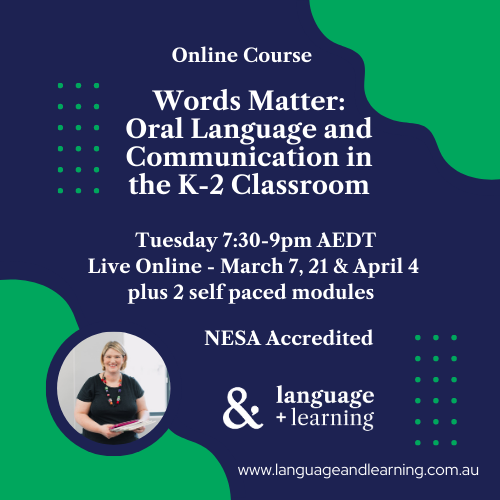
Words Matter: Oral Language & Communication in the K-2 Classroom
- This course will run on TWO occasions in 2023 – Term 1 and Term 3 – Term 3 Dates will be August | September – time tbc
Term 1: Live online Tuesday 7:30pm – 9:00pm March 7 | 21 | April 4 plus 2 self paced online modules → Registrations Open
Completing Words Matter: Oral Language & Communication in the K-2 Classroom will contribute 7 hours and 30 minutes of NSW Education Standards Authority (NESA) Accredited PD in the priority area of Delivery and Assessment of NSW Curriculum/EYLF addressing standard descriptors 2.1.2, 5.1.2 from the Australian Professional Standards for Teachers towards maintaining Proficient Teacher Accreditation in NSW.
This practical online course has been written for Mainstream Classroom Teachers in NSW who are embarking on the transition to the new NSW K-2 English Syllabus in 2023. Teachers from other states, Speech Pathologists and others are welcome to attend, however the content will be specific to the new requirements in the NSW Syllabus that is for Mandatory classroom implementation in Term 1 2023.
Accreditation from NESA for teachers in NSW has been granted for those attending the course in the new Hybrid Model Format. This means that Sessions 1, 3 & 5 will run live on the dates advised below. Sessions 2 & 4 will be completed as online modules with pre recorded videos and a series of small tasks to meet the requirements of NESA accreditation.
There are very significant changes in the new NSW K-2 English Syllabus with the new Oral Language and Communication outcomes and content being one of the biggest changes.
What is covered?
Session 1:
What is new in the Oral Language & Communication Outcomes [K-2 NSW English Syllabus].
A Focus on Whole Class Tier 1 Instruction in an Inclusive Classroom, including discussion of practical differentiation to make learning accessible for all.
This is a LIVE Session via zoom with opportunities for a Live Q & A Session.
Session 2:
Exploring how Typical Development aligns to the Oral Language & Communication Outcomes along with Classroom Application of Resources & Ideas [FOCUS – Listening for Understanding]
This is an ONLINE MODULE . Participants will have TWO [2] weeks to complete the module. It will take approximately 90 minutes to complete.
Session 3:
Exploring how Typical Development aligns to the Oral Language & Communication Outcomes along with Classroom Application of Resources & Ideas
[FOCUS – Social & Learning Interactions + Understanding & Using Grammar when Interacting]
This is a LIVE Session via zoom with opportunities for a Live Q & A Session.
Session 4:
Exploring how Typical Development aligns to the Oral Language & Communication Outcomes along with Classroom Application of Resources & Ideas [FOCUS -Oral Narrative]
This is an ONLINE MODULE . Participants will have TWO [2] weeks to complete the module. It will take approximately 90 minutes to complete.
Session 5
Exploring Programming, Assessment & Progress Monitoring for the Oral Language & Communication Outcomes in the NSW K-2 English Syllabus
This is a LIVE Session via zoom with opportunities for a Live Q & A Session.
Details:
When:
Session 1, 3 & 5 Tuesday Evening 7:30pm – 9:00pm AEDT [Sydney Time]
Term 1: Live online Session 1 March 7 | Session 3 March 21 | Session 3 April 4
- 2 self paced online modules
Session 2 & 4 Online Module – 2 Weeks to Complete [duration 90 minutes]
Will it be recorded? – YES –
- However if you require NESA Accreditation you must attend Session 1, 3 and 5 Live
How long do I have to watch the recordings?
- Unlimited Access to Recordings and Resources [Including any updates]
How is it delivered:
- Session 1, 3, & 5 Live via Zoom + Session 2 & 4 self paced online modules.
- $495 per participant [$450 + GST]
- 3 x Monthly Instalment option available [3 x $155 + GST]
Group Booking
- Register 3 participants + the 4th is free -> Save 25% [ie. $337.50 + GST per participant]
- Pay online then email participant Names & contact email
- Group Participants can be from different schools
- email [email protected]
FAQs
Can I pay by invoice?
- YES – email me [email protected] to arrange
Can I register multiple staff members from our workplace & is there a discount
- Register 3 participants and a 4th extra participant is registered for free → Pay online or email [email protected] to arrange
- Additional discounts available for 16+ participants from the one school → email [email protected] to arrange


In the past week there have been two fabulous blog posts about supporting leaning in mathematics.
The first by Natalie Wexler can be found at the link below
www.forbes.com/sites/nataliewexler/2022/06/21/when-language-prevents-kids-from-succeeding-at-math
While the second by Tim Shanahan can be found here
www.shanahanonliteracy.com/blog/can-reading-instruction-improve-math-learning-in-the-primary-grades
.. but what does this have to do with oral language and literacy?
‘Language is the medium of instruction in all mainstream schools, and is also the foundation of literacy skills [Fricke et al, 2017]
‘There is particularly strong evidence that a wide range of non-phonological language skills including vocabulary knowledge and grammatical skills are critically important for the development of reading comprehension [Fricke, et al, 2017]
Research from Grim, 2008 found that reading comprehension had a significant impact on math learning across the grade → Reading achievement had an impact on conceptual understanding of math and the application of math knowledge [ both the kids of skills involved in story problems] but not on computation [see Tim Shanahan’s blog above]
So this means that if you’re teaching content knowledge across the KLA’s across the grades you’re also working on supporting oral language skills. For those teaching K-2 in 2023 using the new K-2 NSW English Syllabus, this means that you’re programming for oral language outcomes will be integrated across your program rather than needing to be a stand alone ‘oral language’ lesson.
Furthermore, when teaching, you can be achieving English outcomes when teaching mathematics, since many students need explicit instruction to understand synonyms and antonyms of words used for addition, subtraction, multiplication and division in word based problem.
In 2021, I had the opportunity to attend a full day PD with Dr Sarah Powell organised by Sydney University. Dr Powell has been researching intervention for students requiring supports for solving Mathematical Story or Word Problems and has developed the most fabulous free Intervention resource → Pirate Math Equation Quest [www.piratemathequationquest.com]
In addition, on her website you can find a free multi unit online course that she developed which provides professional development on the topic of Mathematics Intervention and supporting students in Mathematics with Learning Difficulties. You can find it here.[ www.sarahpowellphd.com] and also the
An extra free resource that looks super useful is the Evidence Based Specially Designed Instruction in Mathematics which can be found here www.doe.virginia.gov/special_ed/disabilities/learning_disability/swd-mathematics-resources.pdf
It really is true that learning [across the curriculum] occurs on a sea of oral language [further supported by the ability to read and spell]
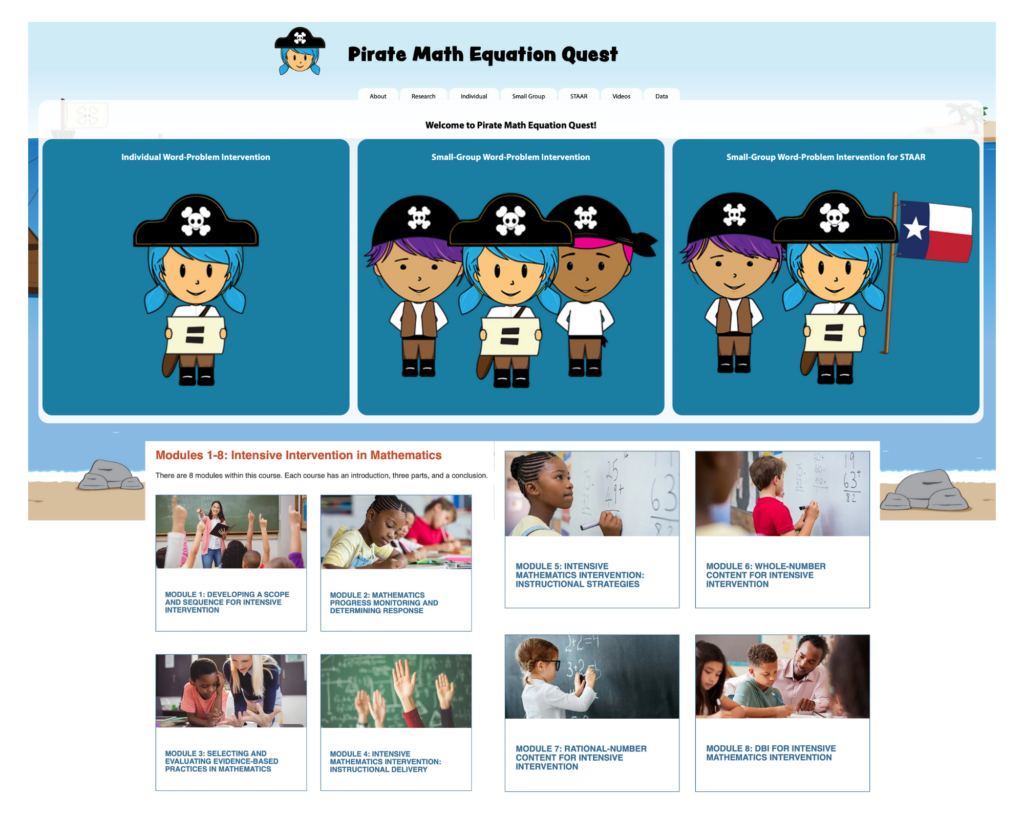
What do we know about the co-existence of Literacy Difficulties [including Dyslexia]
and
ADHD | DLD | Hearing Impairment | Autism | Traumatic Brain Injury
or
Complex Medical Conditions | Oncology | Chronic Heart Disease | FASD | Epilepsy | Rare Disease
How do we Implement an evidence based approach for the rare and medically complex kids?
What drives our decision making?
How can we best support these students in the classroom and clinic setting?
How can the Science of Reading and Science of Learning research provide a solid foundation for all students?
Includes Case Studies across K-12 from the mainstream classroom setting
An expansion of my recent presentation for the DSF-Speld 2022 Language, Literacy and Learning Conference
Presented in celebration of Speech Pathology Week 2022
Supporting partnerships and collaboration between Medicine, Allied Health and Education for students who have opportunities for mainstream education thanks to advancements in medicine, treatment options, early intervention and technology.
This presentation is appropriate for any education, allied health, medical staff and parents of students who may have histories of co-exiting conditions or complex medical histories.
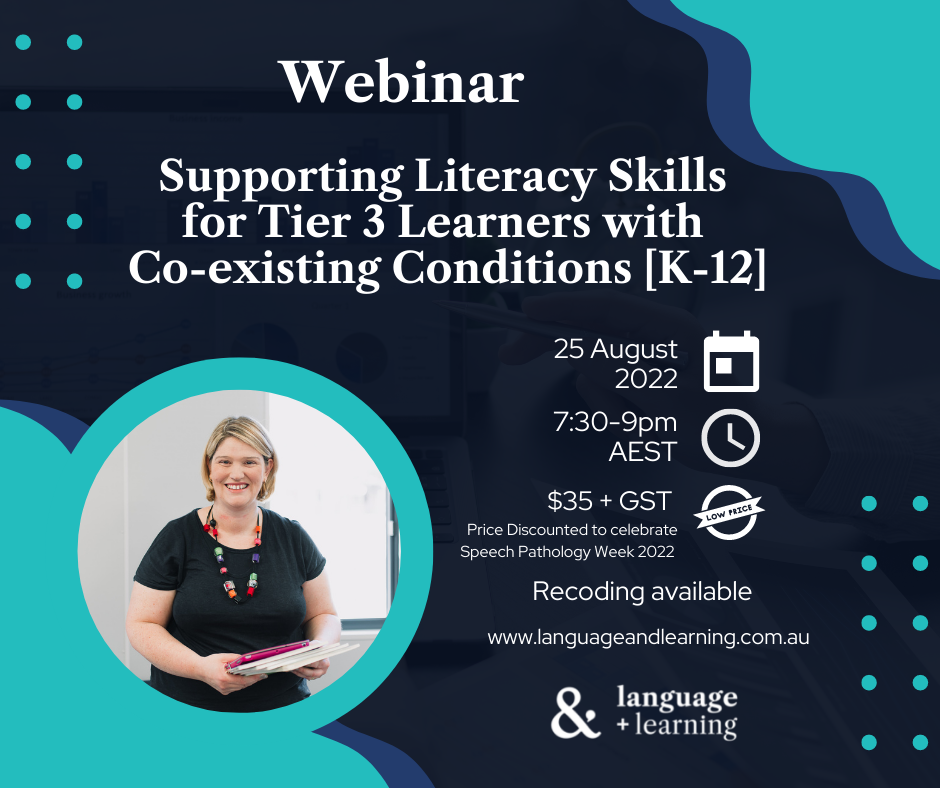
The Inclusive Classroom - Supporting Reading Fluency for Tier 2 & 3 Learners
A Mainstream Classroom typically includes learners of a wide ability range. In my classroom teaching experience I typically assume that a stage 2 classroom [ie Year 4] will typically include learners with reading and spelling ages from 6 years to 16+. Sometimes I have additional support and sometimes I don’t so how do I manage? Over the next few weeks I’ll be sharing resources, research and strategies to ensure all students have both access to content knowledge across the curriculum as well as the ability to read and spell.
When teaching a student to read, it is essential that they achieve fluency at multiple steps. The diagram below from Jan Hasbrouck is most helpful to identify these steps. For students who find learning to read difficult, they need to be supported to develop skills as quickly as possible, they require opportunities for multiple repetitions, visual supports and it is essential that their independence and self esteem be supported to maintain their social and emotional well-being. In addition it is essential that teachers understand the principles of mastery learning so that they can select tools that can maximise outcomes. You can read more about Mastery Learning here www.evidenceforlearning.org.au/the-toolkits/the-teaching-and-learning-toolkit/all-approaches/mastery-learning/
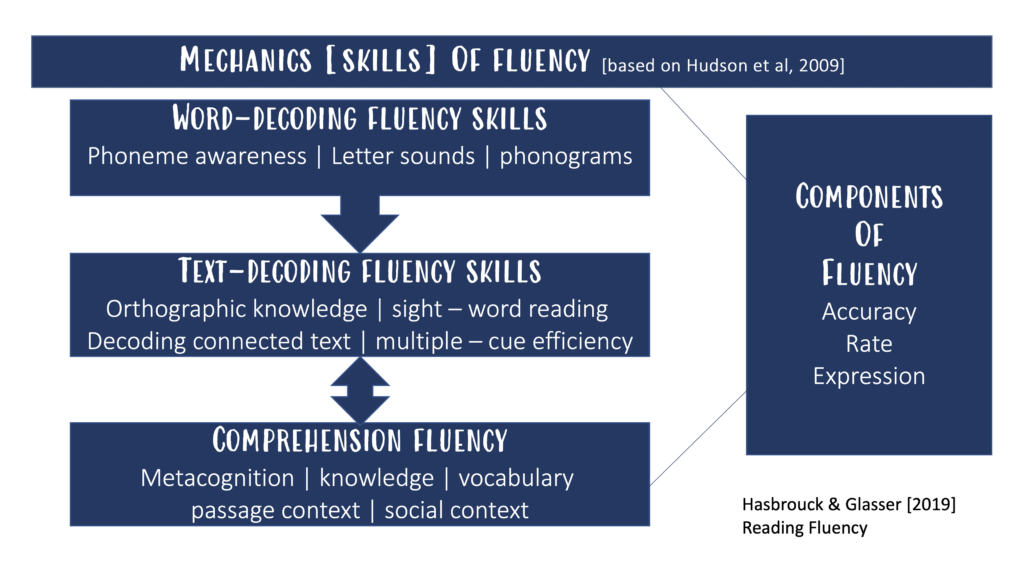
Today I’m focusing my discussions on development of skills at the Word – Decoding Fluency Level with a focus on developing fluent and automatic recall of phoneme awareness, letter sound knowledge and phonograms.
To teach a student letter – sound correspondence skills along with blending and segmenting skills my first step is to use the Apps from Reading Doctor – typically Letter Sounds Pro 1 & Blending Sounds Pro 1 [The others are also brilliant and I am eagerly awaiting the home subscription release of the Online Subscription]. I am very aware that these are paid apps but there are a few features not part of other free apps which I prioritise access to for students at risk of reading failure.
My purpose in sharing is to support awareness of ‘tools for the toolbox’ to support success for all students in the classroom.
- You can find the reading Doctor Apps here for iOS, Android and Google [www.readingdoctor.com.au]
- They include embedded picture mnemonics with consistency across all of their apps → current best practice indicates that embedded picture mnemonics [where the picture cue forms the shape of the letter] is most effective. You can get flashcards resources from
- Spelfabet [www.spelfabet.com.au/materials/embedded-picture-mnemonics/] and
- Kimberly Kreations [www.teacherspayteachers.com/Store/Kimberley-Kreations] however they also require an adult for delivery, whereas with the Reading Doctor Apps a student can be independent once they’re set up.
- The Reading Doctor Apps use a mastery learning delivery structure and support errorless learning. This means that when a student makes an error the app takes them back a step to the previous task and therefore will never become too difficult or too easy. This means that you can set a student in your class up with headphones and use guided access to lock them into the app [Instructions Here], allowing them to work independently and at their level being supported with opportunities for increased practice to support fluency.
- You can use Letter Sounds Pro 1 and Blending Sounds Pro 1 in tandem to support generalisation of skills from Letter- Sound Knowledge [GPC] to blending skills even when a student has a limited number of GPC’s in their repertoire.
- You can add unlimited students into each app.
- The apps are available with Education Discounts – meaning you can purchase 20 for the price of 10.
- There is a fabulous free tracking sheet available from the Reading Doctor website that makes programming and progress monitoring easy [https://support.readingdoctor.com.au/support/solutions/articles/207535-activity-summary-form]
- And finally, you can use the Reading Doctor resources alongside any of your existing Systematic Synthetic Phonics resources to turbo-charge fluency at a Word Decoding Level
- If you have found this useful, please subscribe at the bottom of this page and ensure you don’t miss the next instalment.
- Next time, I will be exploring Text Decoding Fluency Skills, followed by Comprehension Fluency.
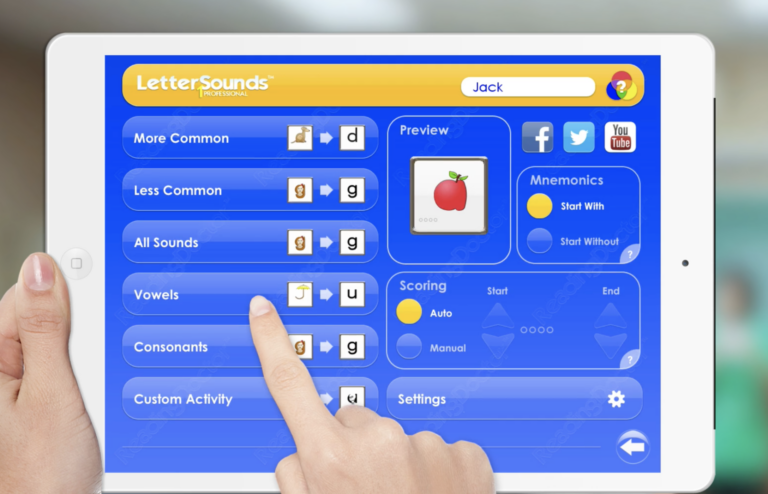
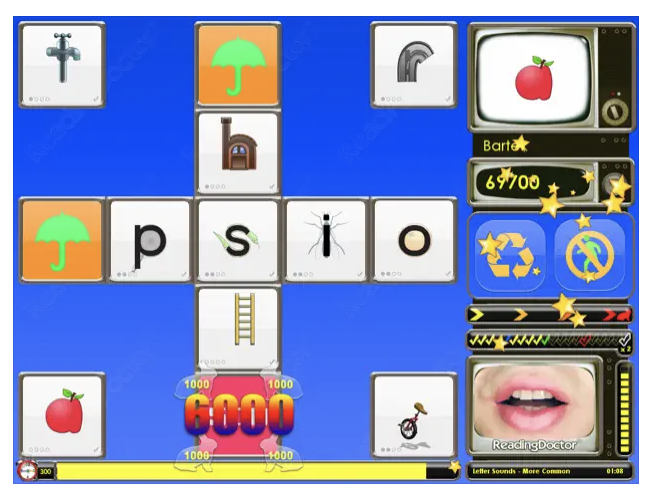
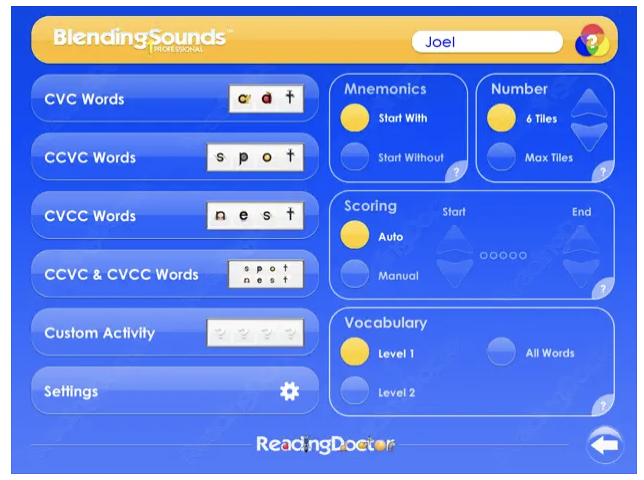
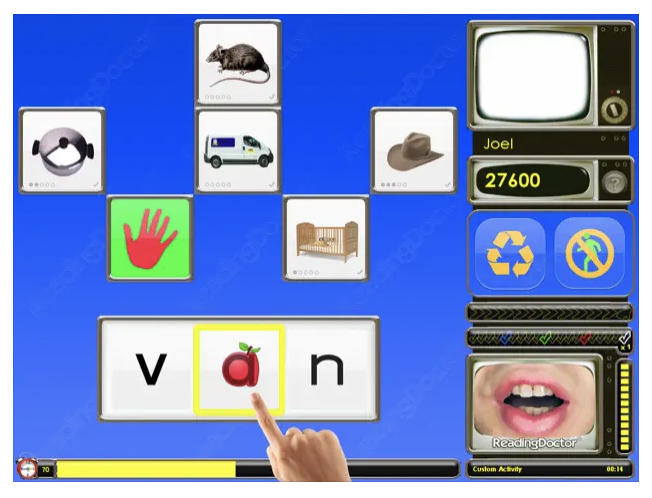
The Inclusive Classroom - Curriculum Access for Tier 2 & 3 Learners
A Mainstream Classroom typically includes learners of a wide ability range. In my classroom teaching experience I typically assume that a stage 2 classroom [ie Year 4] will typically include learners with reading and spelling ages from 6 years to 16+. Sometimes I have additional support and sometimes I don’t so how do I manage? Over the next few weeks I’ll be sharing resources, research and strategies to ensure all students have both access to content knowledge across the curriculum as well as the ability to read and spell.
A student who struggles with reading does not necessarily have a cognitive impairment or inability to learn. Many students who struggle to learn to read have a diagnosed disability [commonly a specific learning difficulty in reading or Dyslexia], they are diligent and extremely hard working students who typically have extremely strong language skills. Students with other disabilities or complex medical needs may also fit into this category. Just because a student has difficulty reading they should not be denied access to learning content knowledge across the curriculum. We have amazingly rich resources thanks to the past two years of online learning. Some of my favourite go to resources include
- Brain Pop [including Brain Pop Jr] [www.brainpop.com]
- Spark Notes [and the new Spark Notes Plus] [www.sparknotes.com]
- Concept Cat and Lift Lessons [www.liftlessons.co]
- ABC Education [www.abc.net.au/education/]
- ABC 3 → Operation Ouch, BTN, Horrible Histories, Matilda and the Ramsay Bunch, The Dengineers
- Foxtel | Binge -> Donna Hay Kids Cooking & Cookbook
- BBC Bitesize – Primary | Secondary | Post School [www.bbc.co.uk/bitesize]
To ensure you don’t miss a post -> make sure you subscribe at the bottom of this page
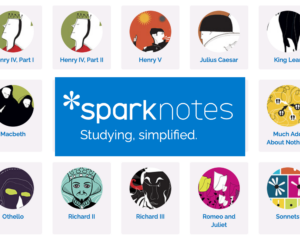
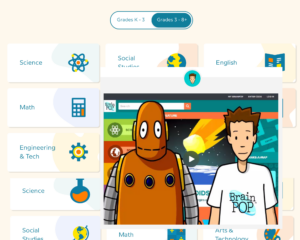
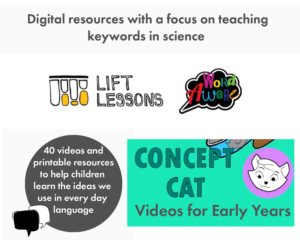

Learning about Literacy -> Learning to Read
- 6 hours professional development live online
- Science of Reading Research [90 minutes]
- Including the process of diagnosis for a Specific Learning Difficulty [Reading] – (Dyslexia)
- Assessment tools [90 minutes]
- Universal Screening | Curriculum Aligned Assessments | Standardised Assessments
- DIBELS, Acadience Reading, TILLS, CTOPP2, WRMT3, TOWRE 2, MOTIF, RAN | RAS, NGRT, NGST, Curriculum Based assessments aligned to a range of commercial & freely available Systematic Synthetic Phonics Programs commonly used in Australia
- Intervention Options [90 minutes]
- Features of an effective intervention session
- Commercial & Non Commercial Resources
- Tools for working with beginning readers & older readers
- Case Studies [90 minutes]
PLUS
- Report Templates [TILLS | CTOPP2 | WRMT 3 | TOWRE 2 | RAN / RAS]
PLUS
Individual Coaching Discount -> save 40% on an hour of coaching | professional support
[This individual professional support can count towards supervision hours for the new Speech Pathology Australia annual membership renewal requirements]
PLUS
- Bonus Webinar -> Supporting Tier 3 Learners with co-existing conditions
- What do we know about the co-existance of Literacy Difficulties with
- ADHD | DLD | Hearing Impairment | Autism | Traumatic Brain Injury
- Complex Medical Conditions [Oncology | Chronic Heart Disease | FASD | Epilepsy]
- How do we implement an evidence based approach for the rare and medically complex kids? What data drives our decision making?
- How can we best support these students in school and clinic settings
- Includes Case Studies
- Live Online Event August 25 2022 [7:30-9pm] – in Speech Pathology Week
PLUS
- 12 months access to all recordings
Outcomes
By the completion of the training participants will understand
- Key Science of Reading Research including but not limited to
- The language basis of learning to read
- The Role of Phonological Awareness, Phonemic Awareness & Rapid Automatic Naming
- The Neurological Basis of Learning to Read
- Diagnostic process for Specific Learning Difficulties in Reading | Writing | Mathematics
- Principles of Effective Instruction – Science of Learning Research
- Principles of assessment & the tools available to assess for a range of purposes including Universal Screening, Diagnostic Assessment, Curriculum Based Assessment & Progress Monitoring.
- Key components of an effective intervention session including commercial and non commercial resources available to support this process
Details
Dates: 12:30pm – 2pm Thursday July 7 | 14 | 21 | 28 2022
All sessions are recorded with 12 months access.
Bonus Webinar Access is for 12 months
Cost: $420
[Use code EOFY to save 25% on individual registrations until midnight AEST June 30 2022]
[Includes over $200 of additional value]
The Australian Curriculum version 9.0 has been launched this week, and the new K-2 English Syllabus for NSW is due for Mandatory implementation from Term 1 2023. Both of these documents recommend a systematic synthetic phonics approach as a backbone of your early years instruction for reading and spelling. Where do you start when aligning your Tier 1 whole class instruction with the new syllabus documents?
- In my journey of implementing this type of change over the past 15 years in a number of schools, I’ve learned that starting with an audit or review of current practice is Step 1: What is your current approach? What is your plan? and How are you going to get there?
- The next step is to collect data about the current situation and student performance. This can be a confronting experience – I know every time I start this process the data initially leaves me shell-shocked, but it is a journey and ‘when we know better, we do better’ [Maya Angelou]. There are a number of tools available and the most commonly used are the Universal Screening Tools DIBELS 8 or Acadience Reading [more information can be found here]. These tools are great because they are designed for progress monitoring and collecting data over time. If you’re wanting more information about reading assessments you can find it here
- When considering what to do next, one question to ask is whether to implement a commercial program with training or whether to simply implement a scope and sequence and develop your own resources. There is no one single program that comprehensively covers all aspects of teaching a student to read, spell and comprehend. However there are a number of commercial options to consider when planning your whole school approach.
Commercial Resources that are commonly used in Australian Schools to support systematic synthetic phonics
These are one component of the broader focus on teaching reading and spelling
Sounds-Write | InitialLit | Read Write Inc | Get Reading Right | PLD | Little Learners Love Literacy | Dandelion Readers [Workbooks] | Snappy Sounds | Reading Success in Action from Jocelyn Seamer Education is also a resource in development
Options for Decodable Readers include
Sounds-Write | InitialLit | Read Write Inc | Get Reading Right | PLD | Little Learners Love Literacy | Decodable Readers Australia | Dandelion Readers & Launchers | Spelfabet | SPELD SA Readers | Snappy Sounds | Sunshine Phonic Readers | Oxford Reading Tree – from Oxford University Press has Floppy Phonics, Songbird Phonics and Traditional Tales [phonics]
SPELDNSW Regularly runs a FREE Decodable Reader Demonstration via zoom, allowing you to explore and discuss options more information is here
Free Scope and Sequence Resources to align with the new K-2 NSW English Syllabus
SPELD NSW has put together a scope and sequence for K-2. This aligns to the new syllabus for schools to either use as it is or adapt for their own purpose. It can be downloaded freely here.
SPELD NSW has also put together decodable book selectors to help your organise your decodable books in line with your scope and sequence. It can be freely downloaded here.
They are also creating a range of resources that are free to members to be released over this year that can be used to support instruction and practice of phonics and morphology that go with the scope and sequence. These resources can also be used with other phonics programs for additional practice activities. These resources can be accessed here.
Systematic Synthetic Phonics Professional Development for Whole Class Instruction [Tier 1]
Teaching Reading in the Early Years [SPELDNSW]
How to Teach Phonics in K-2 [Macquarie University Reading Clinic]
Other Professional Development to support the Implementation of the new Syllabus
Literacy Essentials Online – Science of Reading Basics [SPELDNSW]
Measuring Student Progress in Literacy: A Workshop for Teachers [Maquarie University Reading Clinic]
If you need support to work through this process – SPELDNSW is available and able to provide support. I too have implemented a range of the programs and resources above in a mainstream K-2 school setting and have completed the PD training in many of the options above. I’m very happy to provide small group coaching or tailored support for the team exploring the options and how to implement the change across K-2 and 3 – 6. Feel free to reach out via my website if I can be of assistance.
Once you have this framework established, the nest step is to map your Tier 2 and Tier 3 intervention options – however I’ll save that information for a separate post. Should you be needing support or professional development regarding working with Tier 3 students in either Primary or Secondary School Settings, I’m running some small group coaching in June over 4 sessions [Lunchtime or evening options via zoom] – more information is here


